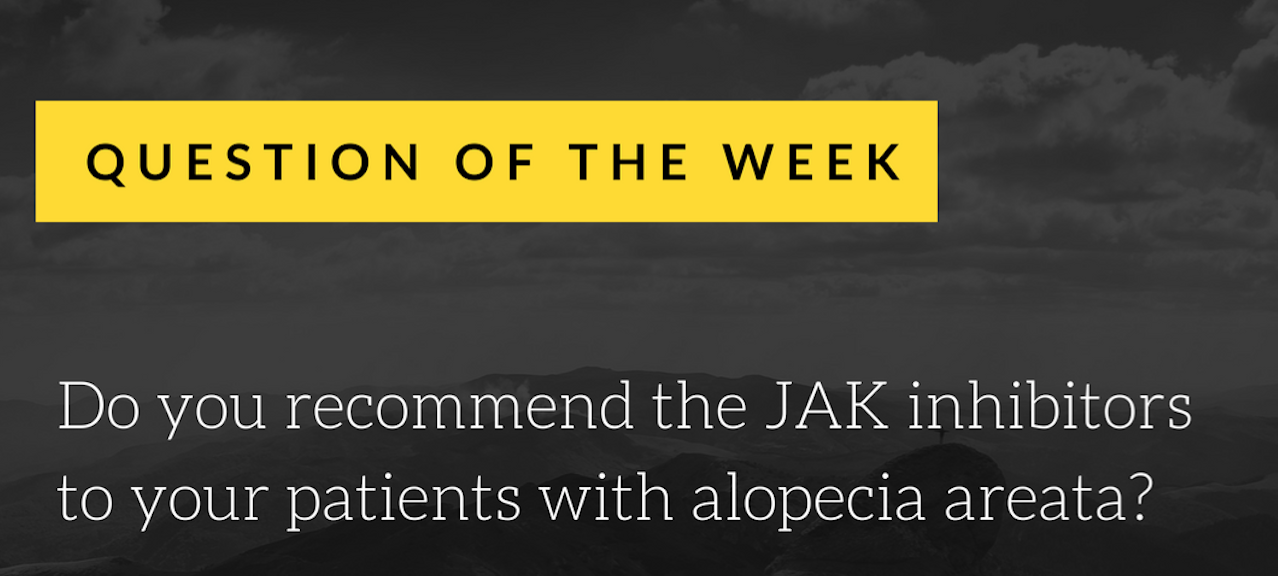Are JAK Inhibitors Recommended for Patients with Alopecia Areata?
Question
QUESTION: I’ve heard alot about the new JAK inhibitors for alopecia areata. Do you recommend them to patients?
ANSWER
Thanks for the question. JAK inhibitors are a groups of medications that inhibit a pathway inside cells known as the janus kinase pathway. There are actually an increasing number of JAK inhibitors being studied for human disease. The best studied by far are tofacitinib (Xeljanz) and ruxolitinib (Jakafi/Jakavi). Tofacitinib is FDA approved for the treatment of rheumatoid arthritis. Ruxolitinib is FDA approved for the treatment of myelofibrosis.
There is little doubt that the JAK inhibitors are among the more consistently effective of the 26-28 medications to date that we use for alopecia areata. However, the current high cost of the drug limits their widespead use. Furthermore they are not first line for most people meaning that they are not the first treatment to consider. The first line treatment for patient with several patches of alopecia areata remains topical steroids and/or steroid injections - not a JAK inhibitor.
Nevertheless, JAK inhibitors are finding their way into the treatment algorithms for alopecia areata. Patients not responding to topical steroids or steroid injections may consider options such as diphencyprone (DPCP), anthralin, methotrexate and prednisone. However JAK inhibitors are positioning themselves as reasonable evidence-based second or third line options.
Topical JAK inhibitors are also finding a role in the treatment of alopecia. 2 % Tofactiinib liposomal cream and 0.6 % ruxolitinib have both shown promise. These are compounded from the pill form at a compounding pharmacy. These agents are also quite expensive and require some skill and experience from the perspective of the pharmacist in how best to make up.
In summary, I rarely recommend a JAK inhibitor as a “first line” option to a patient who has newly diagnosed alopecia areata. However for those with refractory or progressive disease, it most certainly becomes an option to consider.
You may find these previous articles of mine helpful as well:
Tofacitinib for AA: How fast does regrowth occur?
The Topical JAK Inhibitors for AA: Update on Progress
How long do we need to use tofacitininib in AA?
Topical Tofacitininib for Alopecia Areata: How much does it help?
How does the safety of tofacitinib compare to other drugs?
Why do patients stop tofacitinib?
Tofacitinib (Xeljanz) for Children and Teens
Xeljanz in Children: How young is too young?
The JAK Inhibitors for AA: More Data
A look at Inflammatory Markers in AA Treated with Tofacitinib
What blood tests do we need to monitor for patients using tofacitinib?
Topical ruxolitinib promotes eyebrow regrow
Are responses to stress altered in users of tofacitinib?
Nail alopecia areata helped by tofacitinib

